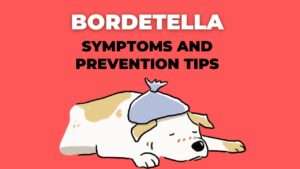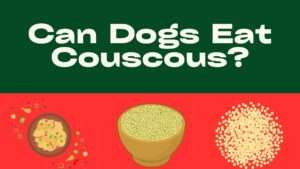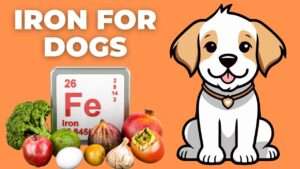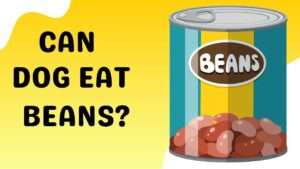As we tend to our gardens and enjoy the fruits of our labor, we often wonder if our furry companions can also savor the delights of our harvest.
Tomatoes, with their vibrant colors and rich flavors, are a staple in many kitchens. But are they safe for our canine friends to enjoy?
Let’s explore the world of tomatoes and their suitability for dogs.
Contents Overview
What are Tomatoes
Tomatoes are vibrant, juicy fruits that are widely cultivated and consumed around the world. Though often mistaken for vegetables, they belong to the nightshade family and are botanically classified as berries.
Tomatoes come in various shapes, sizes, and colors, ranging from small cherry tomatoes to large beefsteak varieties, and they are prized for their versatility in culinary applications.
With their rich flavor and nutritional value, tomatoes are used in a wide array of dishes, including salads, sauces, soups, and sandwiches, making them a staple ingredient in many cuisines globally.
The Nutritional Profile of Tomatoes
Tomatoes are not only delicious but also packed with essential nutrients that offer various health benefits for both humans and dogs:
- Vitamins and Minerals: Tomatoes are rich in vitamins A, C, and K, as well as potassium and folate, which support overall health and vitality.
- Antioxidants: Tomatoes contain powerful antioxidants such as lycopene, beta-carotene, and quercetin, which help combat inflammation and oxidative stress.
- Hydration: With their high water content, tomatoes can contribute to hydration, especially when served fresh or as part of a meal.
Can Dogs Safely Eat Tomatoes?
Yes, dogs can eat tomatoes in moderation, but with caution. While ripe tomatoes are generally safe, green parts and unripened tomatoes contain solanine, which can be toxic to dogs in large amounts.
It’s best to remove stems, leaves, and unripe parts before sharing tomatoes with your furry friend.
Additionally, tomatoes are acidic and may cause stomach upset or gastrointestinal issues in some dogs.
Always introduce new foods gradually and monitor for any adverse reactions. Consulting your veterinarian for personalized advice is wise, especially if your dog has any health concerns or dietary restrictions.
Health Benefits of Tomatoes for Dogs
Despite being a fruit often debated for its safety in canine diets, tomatoes can offer several health benefits for dogs when given in moderation:
1- Improved Immunity
The vitamin C content in tomatoes supports a healthy immune system, helping dogs fight off infections and illnesses.
2- Eye Health
Vitamin A in tomatoes contributes to good vision and eye health in dogs, promoting overall ocular wellness.
3- Anti-inflammatory Properties
The presence of antioxidants like lycopene and beta-carotene helps reduce inflammation, potentially alleviating symptoms of arthritis or joint pain in dogs.
4- Hydration
With their high water content, tomatoes can contribute to hydration, especially beneficial during warm weather or for dogs with increased activity levels.
5- Supports Digestive Health
The fiber content in tomatoes aids in digestion and can help regulate bowel movements, promoting gastrointestinal health in dogs.
Potential Risks of Feeding Tomatoes to Dogs
While tomatoes offer certain health benefits for dogs, it’s essential to be aware of the potential risks associated with their consumption.
Being informed allows pet owners to take necessary precautions to ensure the well-being of their furry companions.
1. Toxic Compounds
- Solanine and Tomatine: Tomatoes belong to the nightshade family, which contains compounds like solanine and tomatine. These substances, found in higher concentrations in unripe tomatoes and the stems and leaves, can be toxic to dogs when consumed in large quantities.
2. Digestive Upset
- Gastrointestinal Distress: Some dogs may experience digestive upset, including symptoms like diarrhea, vomiting, or abdominal pain, after consuming tomatoes. This can be attributed to the acidity of tomatoes or an intolerance to certain components.
3. Allergic Reactions
- Allergies: Like humans, dogs can also develop allergies to certain foods, including tomatoes. Allergic reactions may manifest as itching, skin irritation, hives, or gastrointestinal symptoms. It’s essential to monitor your dog closely for any signs of allergic reactions when introducing tomatoes into their diet.
Precautions When Feeding Tomatoes to Dogs
To mitigate the potential risks associated with feeding tomatoes to dogs, pet owners should take certain precautions:
1. Moderation is Key:
- Portion Control: Feed tomatoes to dogs in moderation, as excessive consumption can increase the risk of adverse effects. Limit the amount of tomatoes given to your dog, especially if it’s their first time trying them.
2. Safe Preparation:
- Remove Stems and Leaves: Always remove the stems and leaves from tomatoes before feeding them to dogs. These parts contain higher concentrations of toxic compounds like tomatine, which can be harmful to dogs if ingested.
3. Choose Ripe Tomatoes:
- Opt for Ripe, Red Tomatoes: Ripe tomatoes have lower levels of tomatine and solanine compared to green or unripe ones. Stick to feeding ripe, red tomatoes to reduce the risk of toxicity.
4. Monitor for Adverse Reactions:
- Observation: After feeding tomatoes to your dog, observe them closely for any signs of adverse reactions, such as vomiting, diarrhea, lethargy, or allergic symptoms. If any adverse effects occur, discontinue feeding tomatoes and consult a veterinarian if necessary.
5. Consult with a Veterinarian:
- Individual Considerations: Before introducing any new food, including tomatoes, into your dog’s diet, consult with a veterinarian. They can provide personalized guidance based on your dog’s breed, age, health status, and dietary requirements, helping you make informed decisions about their nutrition.
How to Safely Serve Tomatoes to Your Dog
If you decide to share tomatoes with your furry friend, it’s essential to do so safely and in moderation:
- Small Portions: Offer tomatoes to your dog in small, bite-sized pieces to prevent choking and ensure they tolerate them well.
- Remove Stems, Leaves, and Green Parts: Before serving tomatoes to your dog, thoroughly wash them and remove any stems, leaves, or green parts to minimize the risk of toxicity.
- Cooked or Pureed: Cooking or pureeing tomatoes can help break down the potentially harmful compounds and make them easier for dogs to digest. Avoid adding spices, salt, or other seasonings that may be harmful to dogs.
- Monitor for Reactions: After feeding your dog tomatoes for the first time, monitor them closely for any signs of allergic reactions or digestive upset. If any adverse reactions occur, discontinue feeding tomatoes and consult your veterinarian.
When to Avoid Tomatoes to Dogs
- Puppies: Avoid feeding tomatoes to puppies, as their digestive systems may not tolerate them well, increasing the risk of digestive upset.
- Dogs with Sensitivities: If your dog has a history of food allergies or sensitivities, it’s best to avoid tomatoes to prevent potential allergic reactions or gastrointestinal distress.
- Renal Issues: Dogs with pre-existing kidney problems should avoid tomatoes due to their high potassium content, which can exacerbate kidney issues.
- Overweight Dogs: Tomatoes are relatively high in natural sugars and can contribute to calorie intake. Avoid feeding tomatoes to overweight or obese dogs to help manage their weight.
- GI Issues: Dogs experiencing gastrointestinal issues, such as gastritis or inflammatory bowel disease, may find tomatoes irritating to their digestive tract. It’s best to avoid tomatoes during episodes of GI upset.
- Tomato Plant Parts: Keep dogs away from tomato plants, including stems and leaves, as they contain higher concentrations of toxic compounds like tomatine, which can be harmful if ingested.
Safe and Suitable Alternatives of Tomatoes for Dogs
If you’re looking for safe and suitable alternatives to tomatoes for your dog, consider options such as:
- Carrots: Rich in beta-carotene and low in calories, carrots make a crunchy and nutritious snack for dogs. They’re also beneficial for dental health.
- Cucumbers: Low in calories and high in water content, cucumbers are refreshing treats that provide hydration and a crunchy texture.
- Bell Peppers: Packed with vitamins A and C, bell peppers offer a flavorful alternative to tomatoes. Opt for ripe, red peppers for maximum nutritional benefits.
- Zucchini: With its mild flavor and high water content, zucchini is a hydrating and low-calorie option that dogs enjoy.
- Blueberries: Loaded with antioxidants and vitamins, blueberries are a sweet and nutritious treat that dogs love. They also promote brain health and immune function.
Bottom Line
In conclusion, while tomatoes offer several nutritional benefits, they also pose potential risks for dogs due to the presence of solanine and tomatine, especially in the stems, leaves, and unripe green parts.
Fully ripe, red tomatoes can be fed to dogs in small quantities, provided they are prepared and served safely. It’s essential to remove stems, leaves, green parts, and potential choking hazards before offering tomatoes to your dog and monitor for any adverse reactions.
With careful consideration and moderation, you can share the occasional tomato treat with your furry friend and enjoy the bounties of your garden together.
So go ahead, exercise caution in the tomato patch, and savor the joy of sharing wholesome snacks with your canine companion!




































+ There are no comments
Add yours